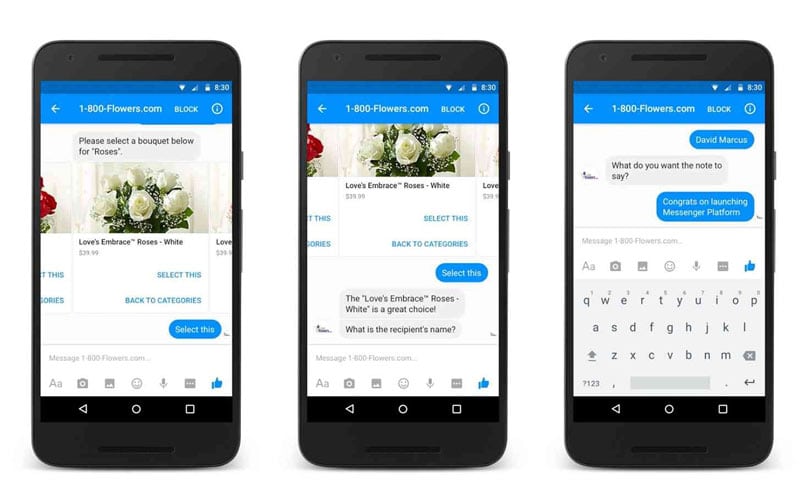Whether you are a fan of the digital revolution or think it’s all evil, we are a society driven by digital technology. It has and will continue to shape the way we live, work, and shop. From hailing a cab to ordering takeout, it’s a moment’s job that requires just a few clicks on the go. No more hustling, no more whistling for a taxi and no more dealing with difficult people.
Shopping is one of the spheres that has been greatly influenced by digital technology. And as people want to be more self-reliant, shopping is increasingly shifting to digital channels. But at its very core, buying goods is still and always will be a social experience.
It’s about interactions, it’s about conversations, it’s about questions and answers.
Buying and selling goods seems impossible without questions like – “Do you have this bag in a different color? What can I get in under $100? Is there something that’s bigger than this but the same price? I think I’d like to see a few more options before I can decide. Can I ship it back for free if I don’t like it?”
However, thinking about current e-commerce interfaces, there seems to be no place to ask questions in the way, we humans, like to ask them. Today, customers need to quantify their needs based on categories and filters, which are unnatural at best, indecipherably complicated at worst. It’s a classic case of humans adapting their approach to suit machines.
And the time has come that we change this forever.
That is why the advent of ‘conversational commerce’ has arrived –it enables businesses to engage in a two-way dialogue that turns a path to purchase into conversation. Engaging in a conversation can be executed through a variety of mediums and channels, whether it be chatbot, product finders, voice assistants, visual commerce, and more.
Consumers world over have shown uncanny enthusiasm at accepting voice technologies like Amazon Echo, Google Assistant, and Alexa, with 55% of US homes likely to have voice-powered home assistants by 2022.

But even so, can e-commerce really tap into this technology as seamlessly as say, home automation? How do we shop without looking at the products we want to buy? That’s indeed the biggest question that comes to mind. But the fact remains that what technology dreams, it achieves. With a few stumbles and falls, we will soon be ready to shop for our favorite things by just talking to an AI-powered machine, or texting with a chatbot.
And yet, the challenges remain.
Getting your business ready for conversational commerce will need a complete structural redesign. Being able to design voice-powered customer experiences requires rethinking the way we’ve been doing this for over a decade.
Shopping is inherently different from many other things we do online. It is a non-linear, highly distracted path with plenty of alternate ways a customer can go. Getting machines to keep up with the ever-changing whims and fancies of human psychology and designing your customer journey to allow for seamless human-like responses will be a mighty feat.
Some things like search optimization – that you think you’ve just about nailed – will have to be re-imagined. Other things like seamlessly integrating payments will have to be done with a high level of technological finesse and security.
But in the end, if you can really put in the effort and get your business ready for conversational commerce, the results will be totally worth it. In fact, if you don’t hop onboard in time, you might just get left behind. Historically, businesses that failed to change with the times just collapsed.
1) Optimize for Voice Search & Discovery
Human beings learned to talk first and much, much later, learned the art of writing and reading. In the world of computers, however, evolution has happened in reverse order. We began with using text inputs for computers and only now are we able to substantially use voice to interact with computers. And that means we have a lot of unlearning and relearning to do.
When interacting with conversational commerce applications, like a guided selling assistant customers will no longer be talking keywordese.
Once voice-adoption truly takes off, search queries will be changed dramatically. Your business needs to be prepared to handle natural language processing like a pro and respond unblinkingly to questions like “I want to buy a new pair of shoes” and “show me something in black”. And that’s just on the easier end.
You will come across questions like “Which Ski Shoes or Snow Boots should I buy for a trip to the Swiss Alps?” and you must have a good answer. A customer may say “Show me some good options for home lighting” and you must be ready with appropriate responses like – “sure, are you looking for indoor or outdoor lighting?” Based on the customer’s answers, you must be ready with appropriate product matches.
You might have noticed that it will seldom happen, that you jump into offering product choices as soon as a customer asks the first question. You always start by asking more questions. This is where you need to know how to ask the right questions and match the customer up with the best product selection that will help them decide faster and leave your store feeling perfectly satisfied with their purchase.
2) Write Product Descriptions That Can Talk Back
Since some forms of conversational commerce have little to no visual interface, you will need to do a bang-up job of writing product descriptions that tell the customers everything they need to know just by listening.
The product descriptions will need to contain answers to all common questions a customer may come up with.
Even if the customer is using a visual interface, they might want to ask a few questions verbally, such as – “how many airbags does this car have?” or “can I use this camera underwater?”
You will need to anticipate all possible queries that a product may inspire and use voice-specific metadata that can be instantly played back to the customer, selecting the perfect response each time.
From close-ended yes/no responses to carefully worded answers that provide enough information, you’ll need to pack it all in.
3) Don’t Forget Text Conversations
I just realized we’ve spent so much time talking about talking. But that’s not the only type of conversation there is.
It’s notable that the four major messaging apps have overtaken the four major social media apps in terms of user-base. Facebook Messenger is already upping the ante with personal shopping features.
If you haven’t heard of the 1-800-FLOWERS collaboration with Facebook Messenger, you can now order flowers by simply chatting with them. you can even ask for suggestions, compare different products and the chatbot even does a great job of upselling. David Marcus, an executive at Facebook Messenger jokingly said –
“I can guarantee that you will spend way more than you want to on this, it’s very addicting.”

So, in your mission to get your business ready for conversational commerce, be sure to factor in messaging apps and chatbots.
Messaging apps offer one of the most personal, convenient, and enjoyable avenues for shopping experiences and cannot be left out.
4) Find a Way Around Payments
Making payments seamlessly through chatbots and voice-assisted platforms could be one of the trickiest details to nail. After comfortably enjoying a shopping experience with your conversational portal, finding and choosing the right product, if users then have to take out their phone or visit another interface just to make a payment, it could defeat the purpose of providing a seamless. all-conversational experience.
You can incorporate mobile wallets or design custom digital wallets to overcome this barrier. Of course, it may be a while before this process can be as seamless as handing your card to a sales assistant, but we’re getting there and we might as well be prepared.
5) Pay Attention to the Human Touch
After all, that’s what this was all about, right –bringing the human touch back to shopping, making it social again, and bringing the fun back?
That is why even though conversational commerce will primarily be powered by artificial intelligence, machine learning, and natural language processing, you simply cannot overlook actual human involvement.
- You have to understand how a customer makes decisions to provide him or her with the right information at the right time to drive sales.
- You have to know how to engage shoppers and ask the right questions in the right tone and manner to make them feel understood and keep a forward-moving momentum.
- You have to figure out how to bring the advantages of human-human interactions from the physical world to the digital world.
Those who understand how to create frictionless and fluid human-digital interactions will excel in conversational e-commerce. Even in the digital buying journey and decision-making process, if you can truly provide handpicked products and personally curated selections, you’d be totally in it to win it.
To truly make the best conversational commerce experiences, you will need the perfect blend of technology and the human element. Only when you are totally willing to do what it takes to keep the customers happy, will you be able to survive this age of the empowered customer.


